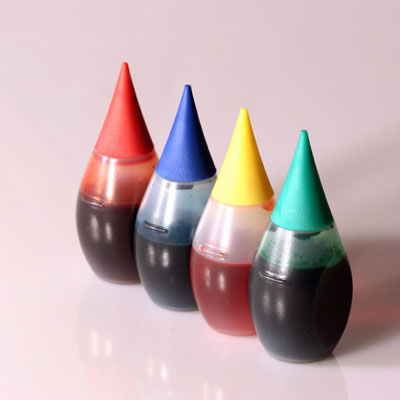This post is dedicated to Jordana! When Christopher and I moved in with my sister for a few months last year, we completely overwhelmed her small kitchen. My various miso pastes took up a whole shelf in her fridge, there were jars of dry beans and grains piled up on the counters, and even though I did not move in all of my pickling crocks, various fermenting things were tucked in corners everywhere.
My very patient sister put up with all of this in a consistently good natured way, until she saw the Kombucha Mother coming in the door. She made a noise that sounded like "Bluuh," and looked at me pleadingly as I paused in the doorway with my glass jar full of thick, slimy, yeasty, bacteria-filled culture. "I didn't know you were bringing the Kombucha with you!"
"Where I go, she goes!" My mock defiance only made Mary look more besieged. So I explained that I HAD to bring the Kombucha Mother and some of her juice because she had to be refrigerated when not in use, and we didn't have refrigeration on our land yet, and besides, the Mother would die if exposed to freezing weather, and nothing was insulated yet in our still-in-progress house. I wheedled and cajoled and promised to hide the jar at the very back of a shelf in the fridge where no one would ever even have to know she was there.
In Mary's defense, the Kombucha mother really is entirely disgusting-looking. It's a slimy disk with sort of snotty-looking strands coming off of it and a slick, shiny surface with bubbled-up areas here and there. The one in question was about an inch and a half thick and about six inches in diameter and squished up in a mason jar in some of its juices. In a jar, it looks kind of like a brain. On the loose, it's more of a placenta effect. I mean, we are talking GROSS.
The photos below are not for the faint of heart:

 The Kombucha Mother in all of her slimy glory
The Kombucha Mother in all of her slimy glory
Technically, the Kombucha Mother is a Symbiotic Colony of Bacteria and Yeast (SCOBY), alternately called a Symbiotic
Community, if you're not into colonialism (thanks
Sandor Katz.) Either way, it even
sounds gross to most people.
But wait, there's more. Specifically, the culture contains acetobacter (acetic acid bacteria) and yeasts -- including brettanomyces bruxellensis, candida stellata, schizosaccharomyes pombe, torulaspora delbrueckii, and zygosaccharomyces bailii (according to
Wikipedia). Does
that make you want to drink it?
Stay with me, loyal readers. Despite the gross factor, kombucha is SO worth it.
It is a probiotic powerhouse. Its beneficial bacteria help support your digestive system - you can drink it as a digestive aid when needed, or just use it as a tonic to build digestive health. It can be used during or after taking antibiotics to restore healthy flora to the digestive tract. It boosts the immune system, supports the liver, and helps flush toxins from your system. Some studies show it has an anti-microbial effect against "bad" bacteria, so you can use it as a preventative tonic. It's packed with antioxidants and amino acids, too.
Kombucha devotees claim all sorts of other benefits ranging from healthy skin to stress relief to helping to reduce cravings for alcohol and other drugs.
Here's some interesting background from an article (
"Kombucha: Soft Drink for the 21st Century?") by Jennifer Adler:
"Some...miracle health claims include: detoxification, boosting metabolism, assisting digestion and even curing cancer. Advocates believe that Kombucha works by assisting the liver’s ability to detoxify the body. This hypothesis is due to early observations of increased glucuronic acid conjugates in the urine after Kombucha consumption, a signifier of increased detoxification by the liver. However, more recent analysis of Kombucha offers other explanations for its potential health benefits. First, Kombucha’s high levels of organic acids help maintain proper acid/alkaline balance in the body by promoting tissue and blood alkalinity. The fermented brew is also rich in antioxidants and amino acids, namely L-threonine, which supports healthy protein balance. A Cornell University study on the tea’s anti-microbial activity found that Kombucha’s acetic acid composition rendered it helpful against a range of pathogenic bacteria. But beyond this sole study, no authoritative research has been performed to prove or disprove the anecdotal raves of Kombucha converts."*With all of these health claims, and with natural foods stores selling commercially-made kombucha for $5 a bottle (plus celebrities like
Lindsay Lohan and
Halle Barry being sighted with high-end bottled kombucha in hand), you might think it would be expensive or complicated to produce. But it is cheap and easy once you have the starter culture (The Mother).
Here's a basic recipe:
- Heat 3 quarts of water almost to boiling
- Add 5 to 7 bags of black tea or 2-3 tsp loose tea. I've also thrown in a few bags of ginger tea, or used mango black tea for subtle flavor differences.
- Steep 15 minutes or so. Pull out the teabags or strain the loose tea out.
- Add 1 cup white sugar --not honey, not stevia, not raw brown hippie sugar, but good old deathly white Domino-type refined white sugar. The kind you don't even keep in your house anymore. Experienced kombucha makers have tried all kinds of substitutes, but white sugar really works best, and lots of substitutes don't work at all. I keep some around just for kombucha. Don't worry, it gets eaten and "digested" by the live cultures and is not bad for you by the time the kombucha is fermented.
- Cover with a cloth and allow to cool to room temperature. I usually brew the tea just before bedtime, and leave it out overnight to cool, particularly if I'm making a big batch which takes a long time to reach room temperature.
- Pour the room-temperature sugary tea into your fermenting container -- a large glass cookie jar is the perfect vessel.
- Add THE MOTHER! It's also good to add a little already-fermented kombucha (usually you'll have some that you used for storing The Mother in) at this point to get the process going.
- Cover with a clean cloth (I usually use a rubber band to keep the cloth on, which ensures that no flies can get up under there in their quest to reach that sugary-smelling substance).
- Ferment. This just means "let it sit there undisturbed." No need to stir. Some recipes call for a 6-8 day fermentation, but that makes a pretty weak kombucha. I sometimes let mine sit for a month or so. Once it's bubbly and sour you can keep harvesting it continually as you like, and it will keep getting stronger. Or when it gets to a point you like, you can bottle it up and refrigerate it.
- The final product will be sparkley and tart. Enjoy!
You can keep The Mother alive in the fridge with some mature kombucha for weeks at a time while she's not in use. I have had a constant cycle of kombucha-making going for a while. The Mother will constantly be creating "babies" (she is prolific) which you can give away to fermenting friends or just compost if the reproduction gets out of hand. I've given away 2 babies in the past month, and have more to spare if anyone local wants one!
 The Mother in action
The Mother in action
 Covered kombucha fermenting
Covered kombucha fermenting The final product!
The final product!
I usually make my kombucha strong and dilute with juice or water (many storebought kombuchas are cut with juice). You can certainly drink it straight, too.
All in all, I highly recommend getting acquainted with kombucha. The bubbly, sweet and tart beverage is a treat, and The Mother is an exciting, ever-changing presence in the kitchen!
*Bonus photo: click here for a very official-looking picture of some German guy in a lab with a monstrous Kombucha mother. I mostly included this link because it made me laugh. But also, I'm glad to see that it looks like someone somewhere is studying kombucha. It does seem to be true that the effects of kombucha have not been sufficiently studied. So maybe this guy can help.













































